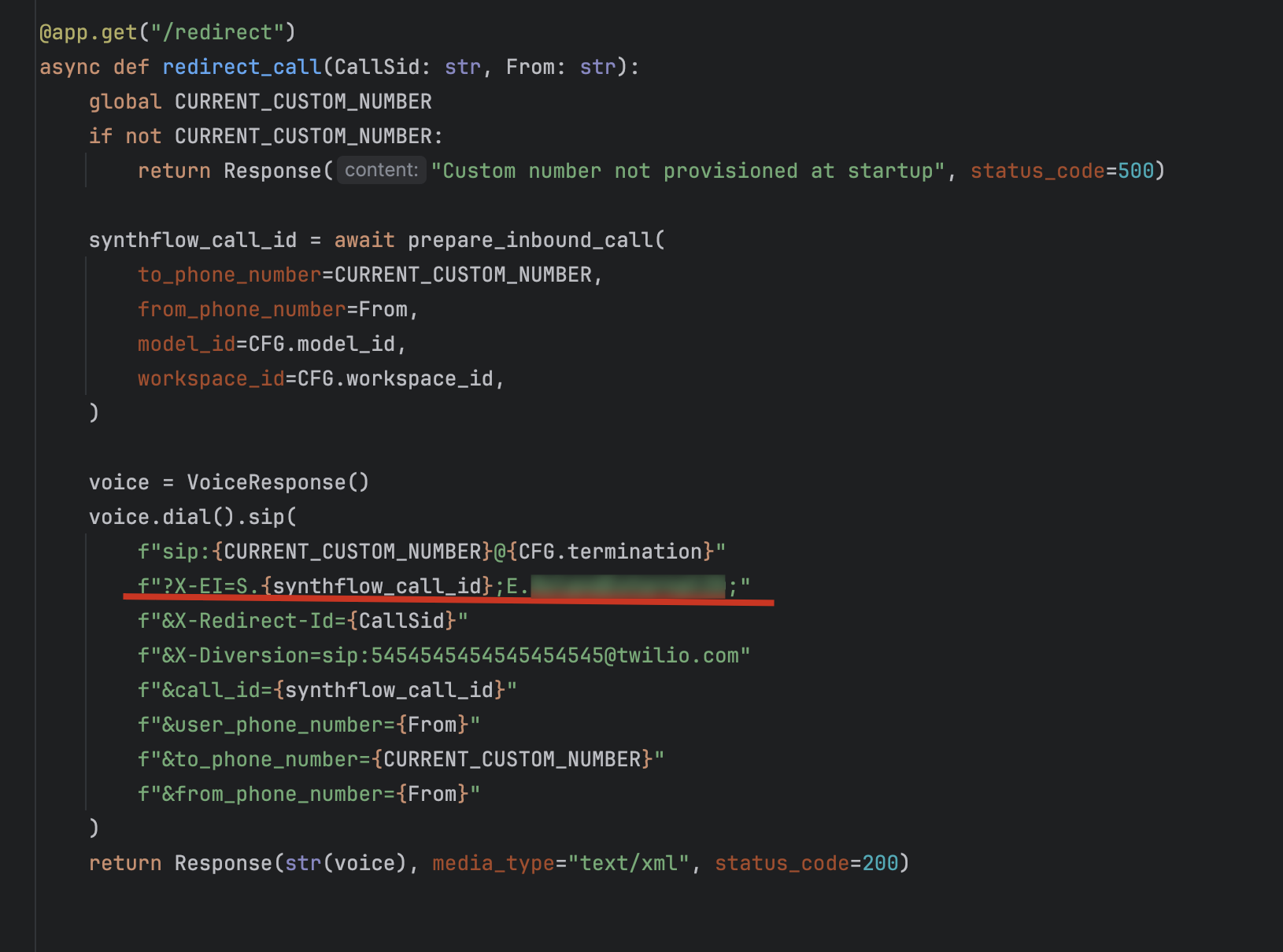Use the X-EI SIP header
The X-EI SIP header lets you pass downstream call metadata from your SBC, PBX, or carrier into Synthflow so agents, analytics, and post-call workflows immediately inherit that context. Use it any time you need to correlate distributed call legs or identify where a transfer originated.
When to use X-EI
- Preserve a platform-native call ID (
Twilio CallSid, carrier GUID, etc.) for every leg of a transfer so custom actions can cross-reference it without re-mapping IDs. - Carry your own external call identifiers from PBXs or CRMs to keep reporting aligned between Synthflow and legacy systems.
- Track diversion chains even when carriers strip the standard Diversion header—Synthflow can reconstruct it through
X-EI.
Header format
X-EI expects a semicolon-delimited list of tokens. Each token begins with one of three prefixes followed by a dot and the value:
You can send any subset of tokens in any order. All combinations are valid.
Avoid semicolons in the token values. Each token ends with ;, so additional semicolons break parsing.
Using the values in Synthflow
Once the INVITE reaches Synthflow, the platform maps the token values to reusable placeholders for prompts, actions, and post-call workflows:
You can call these placeholders inside before-the-call or during-the-call custom actions without additional setup. The E. token also surfaces as call.external_id in the post-call webhook response.
Example: Passing external_id via Twilio Dial SIP

In this example, we are passing E.someExternalID inside the Dial().sip(…) URI.
Deployment notes
- Combine any tokens you need—
S + E,S + O, or all three. - Keep values short to avoid SIP header size limits, especially on UDP trunks.
- If upstream carriers remove Diversion, Synthflow merges the contents of
X-Diversioninto theO.token automatically. - Ensure the header remains URL-encoded if you add it to a query string inside your SIP target URI.
Troubleshooting checklist
- Header missing? Verify your SBC forwards custom SIP headers end-to-end.
- Wrong
external_idin webhooks? Confirm theE.token matches the formatE.<your_id>;and isn’t URL-escaped twice. - Diversion chain incomplete? Check whether the carrier strips Diversion—Synthflow only reconstructs it if
X-Diversionis present.